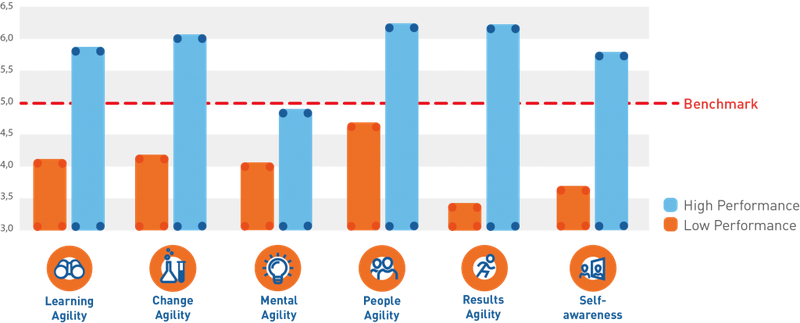Learning Agility - Collaboration to Meet Business Goals
Collaboration is one of the most effective tools for tackling complexity. Decades of research has shown that complex problem solving is faster and more effective in teams than in individuals working alone (Laughlin et. al, 2006). Collaboration is especially critical in environments where cross-disciplinary work and information-sharing is required.
Collaboration and Teams in your Organisation
Organisations perform better when their employees collaborate effectively in high-performing teams. Groups can be highly innovative in addressing complex problems from multiple perspectives, ultimately creating synergy - the output of the team being greater than the sum of its parts.
Given the importance of effective teamwork and collaboration, how can organisations shape the makeup of teams to ensure that they perform effectively?
We know for a fact that Learning Agile individuals typically perform better within organisations. The question arises as to whether the same goes for Learning Agile teams. If this is indeed the case, companies will have powerful leverage to support the future success of teams in tackling complex assignments.
Research into High-Performing Teams

To analyse whether Learning Agility has an impact on team performance, a recent study compared the agility characteristics of successful and unsuccessful teams. Learning Agility on an overall level, as well as it’s five domain scores, was found to be a key differentiator of team performance. The agility differences between the two types of teams were, with exception of Mental Agility, found to be significant.
A detailed review of the results found that high performance teams typically scored higher on Learning Agility than the average person. The opposite was true for low performance teams, with team members generally scoring lower on Learning Agility than average. These findings illustrate that Learning Agility goes beyond a measure of individual performance; it may also be used to build, manage and measure team success over time.
The Learning Agility domains that showed the largest difference in terms of performance were Results Agility, Self-Awareness, and Change Agility. These domains of Learning Agility represent the ability to set goals and strive towards these (Results Agility), the awareness of one’s strengths and development areas (Self-Awareness) and the willingness to explore and experience new things (Change Agility).
Learning Agility as a Benchmark for Collaboration and Team Performance
Understanding the Learning Agility makeup of an individual, and the Learning Agility DNA of a team, empowers organisations to understand how individuals and teams will handle the changes associated with the VUCA future. Applying this knowledge effectively can help shift the organisation from reactive and rigid to proactive and agile in the face of future demands.
Learning Agility DNA can assist talent management specialists in planning and managing high performance teams, using objective scientific assessments as the basis for human capital decisions, and measuring development over time.
Author
Lumenii's team of expert psychologists regularly collaborate to share their ideas and knowledge. The latest case studies, thought leadership, and research.